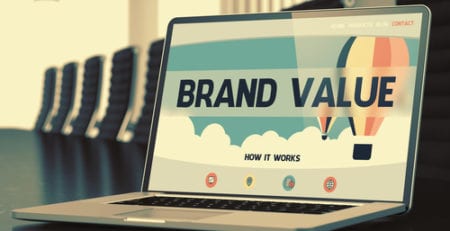The importance of a well-rounded marketing stack
Putting together a marketing technology stack is a lot like putting together a puzzle. Not every puzzle has the same results, some have more pieces than others, and the level of difficulty varies widely. But, in recent years, more pieces have been added to all technology stack puzzles. Solutions seemingly crop up every day to answer questions you didn’t know you had.
Sifting through those pieces gets harder and harder by the day. It becomes necessary to approach building a technology stack the same way you would a puzzle: Begin by separating the pieces into similar groups, and start to connect the pieces that can then fit into the larger picture.
(See how industry leaders build their marketing technology stack.)
Today, sales and marketing executives may be starting to feel like CTOs. Researching, selecting, and implementing new technologies is quickly becoming more and more of a time commitment for them. And it’s not only time that is being taken up; marketing and sales budgets are increasingly being shifted to technological solutions. Gartner predicted in 2012 that by 2017 CMOs will spend more on technology than even CIOs. Moreover, Radius projects, nearly $35 billion will be spent on marketing software in 2018.
The fact that organizations will spend more than the GDP of Cameroon on technology doesn’t answer the obvious question: Why are they spending that much money?
The Buyer’s Journey
The need for building a well-rounded marketing technology stack really comes down to an age-old quest for marketers and sellers alike: to discover who your buyers are, what motivates them, what pains they face, and how to keep them happy. Each solution within a technology stack should ostensibly set out to serve one of those purposes.
CRMs, marketing automation platforms (MAPs), sales enablement solutions, data visualization tools, content management systems, account-based marketing platforms… these all are designed to help organizations gain a deeper understanding of their buyers and provide them with solutions to alleviate their pain points.
This arms race of technology exists in part because buyers themselves have been getting smarter. Old-school marketing and sales techniques aren’t cutting it anymore. The buyers are aware of all the tricks and have come to appreciate (or, really, expect) a selling experience that values them and their individual needs over anything else.
For instance, DemandGen found that 61% of buyers said the vendor they choose delivered the best content tailored to their stage of buying; and Corporate Insights reported that 74% of deals go to organizations that are first to add value and insight.
Keenly understanding the buyer’s journey—and mapping a marketing technology stack to the journey—is the best way to give yourself an advantage.
Better Living Through Technology
Now that we see why specifically catering to buyers and their needs is so important, let’s look at the way specific technologies help organizations with that task. The following solution types are not the end-all-be-all of building a marketing technology stack, but they are important for reaching buyers and understanding their motivations:
CRM: CRMs are one of the oldest and most adopted solutions in any marketing technology stack. These platforms capture important information about buyers, opportunities, and sales activities. Salesforce has been the biggest leader in the space, but other competitors have been making strides as of late. Easy integrations with other technologies makes CRMs invaluable within a technology stack.
MAP: Marketing automation platforms like Hubspot or Marketo have quickly become essential to Marketing, which can now not only capture important information about how buyers interact with content, websites, and campaigns but also execute complex campaigns and lead-flow processes through these solutions.
Sales enablement: These solutions provide a middle ground for Marketing and Sales. Marketing can store content in an easy-to-search repository, ensure brand integrity with version control, and gain insights into how sellers use their content. Sales can find and send content to buyers, see how those buyers interact with the content, and create its own one-off pieces with custom-created marketing templates.
ABM: Account-based marketing is a relatively new strategy, but it’s here to stay. Accordingly, technologies have begun sprouting up to help organizations in their efforts to effectively target individual accounts and execute on outreach. Research has established that an ABM undertaking results in increased revenue and higher quality leads. Solutions such as Engagio are designed to help you hyper-focus on buyers and execute on campaigns to reach them.
Sales readiness: A well-informed seller is one who speaks the buyers’ language and acutely understand their needs. SiriusDecisions has found that 82% of decision-makers think sellers are unprepared. Sales-readiness platforms help overcome that hurdle by providing reps with training materials that help them onboard faster and close deals quicker.
There is no standard, one-size-fits-all marketing technology stack that will work for every organization. Selecting specific solutions will come down to a myriad of factors, ranging from budget to personal preferences. But there are so many technologies out there nowadays, that putting together the proper stack requires due-diligence and serious attention.
The right marketing technology stack is key to understanding your buyers and meeting their needs.






